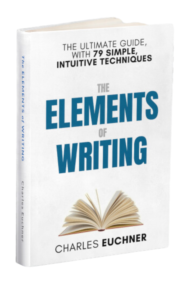Virginia Postrel has forged one of the more intriguing careers in journalism and letters. Once the editor of Reason magazine, she gave the ideals of libertarianism an inventive, modern twist in her book The Future and Its Enemies: The Growing Conflict Over Creativity, Enterprise, and Progress (1998).
 That book, an instant classic, argues that politics is not a battle between right and left, red and blue, or even corporate and government orientation. It is really a battle between dynamism and stasism. Dynamists are optimistic, open, inventive, eager to embrace the tumult that has become the way of the world. Stasists are more pessimistic, fearful of tumult, and willing to go to great lengths to bridle the forces of change.
That book, an instant classic, argues that politics is not a battle between right and left, red and blue, or even corporate and government orientation. It is really a battle between dynamism and stasism. Dynamists are optimistic, open, inventive, eager to embrace the tumult that has become the way of the world. Stasists are more pessimistic, fearful of tumult, and willing to go to great lengths to bridle the forces of change.
How we feel about the evolving future tells us who we are as individuals and as a civilization: Do we search for stasis—a regulated, engineered world? Or do we embrace dynamism—a world of constant creation, discovery, and competition? Do we value stability and control, or evolution and learning? Do we declare … that “we’re scared of the future” and [decry] technology as “a killing thing”? Or do we see technology as an expression of human creativity and the future as inviting? Do we think that progress requires a central blueprint, or do we see it as decentralized, evolutionary process? Do we consider mistakes permanent disasters, or the correctable by-products of experimentation? Do we crave predictability, or relish surprise?
The dynamism-stasism battle cuts across all other divides in modern life. Democrats and Republicans each contain lots of stasists, from crony capitalists to public-sector unionists to evangelicals fearful of modern inquiry and freedoms. Almost by definition, stasists are declinists and can only prevail by thwarting progress. Dynamists, on the other hand, can be found (not always) in Silicon Valley, bustling cities, science, new media, the arts, and the battle for human rights.
Postrel could have spent her whole career elaborating on the dynamism/stasism theme … but that would not be very dynamist, would it? So she has, dynamically, explored other topics. In The Substance of Style: : How the Rise of Aesthetic Value Is Remaking Commerce, Culture, and Consciousness (2003), Postrel argues that style is about superficial surface appearances; it is integral to the social, cultural, and economic value of things. Likewise, in The Power of Glamour: Longing and the Art of Visual Persuasion (2013), Postrel argues that glamour reveals something essential about the ways people present themselves to the world. Talk about the weaving together of form and function: Her latest book is called The Fabric of the World: How Textiles Made Civilization.
Now a columnist for Bloomberg and a regular commenter on social media, Postrel lives in Los Angeles.
Charlie Euchner: I always appreciate a writer who offers a powerful new lens for exploring complex issues. So I admire writers like A.O. Hirschman (Exit, Voice, and Loyalty), James Carse (Finite and Infinite Games), Jane McGonigal (Reality is Broken), E.E. Schattschneider (The Semisovereign People), and Eric Berne (The Games People Play).
That’s what you did in The Future and Its Enemies, with your distinction between dynamists and stasists. You obviously strive for making things as simple as possible, while respecting the complexity of your subjects. Do you have a process for honing your subjects and ideas to their essence. How do you do it?
Virginia Postrel: What I call intellectual infrastructure often comes about unintentionally, as I collect examples that interest me without trying to fit them into a particular pattern. At some point, I start to see commonalities and dichotomies and a pattern emerges. I then test and refine it. Sometimes this is a gradual process and sometimes I have an epiphany and everything just clicks into place.
The stasis-dynamism dichotomy in The Future and Its Enemies evolved from earlier work I’d done on green ideology, where I was struck by the idealization of stasis. That led me to think about its alternative, as well as to see other manifestations of stasis as an ideal. When I was working on The Power of Glamour, on the other hand, I had an a-ha moment when I realized the parallels between glamour and humor. That epiphany made it possible to actually define what type of phenomenon glamour is.
CE: How did you come to write The Substance of Style and The Power of Glamour? Both deal with finding the value in topics that people often dismiss. Why did these topics (and for that matter, your current work on fabric) call out to you?
VP: I’m attracted to topics that are important but overlooked. I’m easily bored and put a high premium on new material and original thought. If everybody already knows something, why bother to repeat it?
In the case of The Substance of Style, I began to notice the rising importance of aesthetics as a source of economic value while I was researching The Future and Its Enemies. The idea for the book started with the trend, but then it forced me to think about why aesthetics is valuable to people, which led me to delve into aesthetics as a source both of pleasure and of meanings beyond the status competition that has always been the go-to explanation for economists and many other social scientists.
I never would have expected to write about glamour, since I tend to be interested in the kinds of details glamour hides. But Joe Rosa, who was a curator at the San Francisco Museum of Modern Art, asked me to write the introductory essay for a catalog accompanying an exhibition on glamour in architecture, industrial design, and fashion. Once I took that on, I realized how pervasive, interesting, and poorly understood glamour is. Several years later I embarked on a book to understand it.
CE: Writing about abstract or complex subjects can be hard, even for the most skilled writers. Your work is strong on every level–sentence, paragraph, section, and whole piece. What secrets do you have for that? How do you “block” the issues at different levels of writing to stay clear and on track, saying the right thing at the right time?
When I was a young writer at Inc. magazine, my editor used to write “weak and vague” in the margins of our articles. It drove our small team crazy, because everything was clear to us and, of course, “weak and vague” is itself a vague critique that didn’t tell us what to do, only what the problem was. Responding to that criticism over and over again forced me to learn about how to be specific. My training there and earlier at The Wall Street Journal taught me that general statements need specific examples, not only as support but to give the audience something to picture.
Even people who like patterns and abstractions are still sensory, story-telling creatures who find arguments easier to follow if you give them specifics that hold their attention. Thinking of examples can also force you to clarify your thinking: Does your pattern really work? What are the exceptions and complexities? Are there examples that contradict it?
As editor of Reason in the 1990s and a New York Times economics columnist in the 2000s, I often had to explain—or help other people explain—complicated technical material. My rule of thumb was: the more complicated the material, the simpler the sentences. Subject-verb-object. If this, then that. Break it into small pieces. The harder it is to understand, the easier it should be to read.
I create categories to organize my own thinking, as well as to give readers intellectual infrastructure they can apply elsewhere. I put a lot of thought into how I structure my books, which is tricky because I’m not a narrative writer. That can require some difficult tradeoffs. The Power of Glamour had to build a theory before it could apply it, which meant that some of the most interesting chapters—on history—come later in the book.
For The Fabric of Civilization, I quickly realized that the obvious structures—chronology and type of fiber—wouldn’t work. A chronological account would be a library, not a book, and separating cotton from silk from wool from synthetics wouldn’t highlight interesting parallel themes. So I’m using a combination of stages of production and themes. The first chapter, for instance, is about fiber and also about how humans alter nature. (There’s no such thing as a “natural fiber.”) The second is on spinning and work, the third on weaving and code, and so on. This structure allows me to span different textiles, different time periods, and different places, while also highlighting important themes in human history and culture.
CE: When you were developing as a writer, did you model yourself off another writer? And as a critical thinker/analyst, were there writers or thinkers who also modeled the way to break down problems and construct responses?
VP: I didn’t consciously model myself on another writer, although I was certainly influenced by The Wall Street Journal’s style. I read its features growing up and it was the first place I worked in journalism. But unlike the WSJ or most other journalistic writing, I’m prone to piling up series and using appositives. I like to multiple versions of the same thing, a tendency I credit to the influence of the Hebrew Bible via my mother reciting Psalms—and explaining the metaphors and structures—to me when I was very young.
Although my writing doesn’t resemble his, I got good advice from the legal scholar Richard Epstein when I embarked on my first book. He warned me against trying to research everything in advance. “Divide the book into three parts,” he said. “Then divide the first part into three parts. Then start on the first of those three parts.”
CE: In an age filled with so much propaganda and misinformation, arguing as blood sport, what do you think is the best approach for writers on current issues? It seems to me that you have taken a one-two punch. First, you concentrate on your own projects and refuse to get distracted. Second, while you speak out, you consciously refuse to get involved in the cycle of outrage and response. Is that right? How can you describe the writer’s role in society in such a crazy time?
VP: Know thyself. Know what you care about and what you bring to the public discussion. My strengths don’t lie in quick takes. And although I do reporting, I’m also not first and foremost a reporter. Other people are better at these things. I’m good at big-picture thinking, providing historical context, and noticing what’s being overlooked. In my short-term column writing I try to concentrate on those things.
Consciously and unconsciously, I’ve also arranged my life to accommodate what you could flatteringly call my integrity and unflatteringly call my diva qualities. I’m pretty stubborn about what I will and won’t do, and I won’t take a journalism job I can’t quit. Having no kids and a husband who’s much the same way makes that easier.
While I understand the market forces that push writers to feed outrage in order to get traffic, I also feel a civic responsibility to keep my cool, not to attribute motives to people that they wouldn’t themselves recognize, and to think about what might actually persuade people who disagree with me. I don’t always live up to those standards—we all get outraged sometimes—but the older I get and the more history I read, the easier it is to do.
It also helps that, unlike many, perhaps most, female writers, I have never felt either market pressure nor a personal desire to write about my personal experiences and emotions. What interests me is learning and writing about the world.


